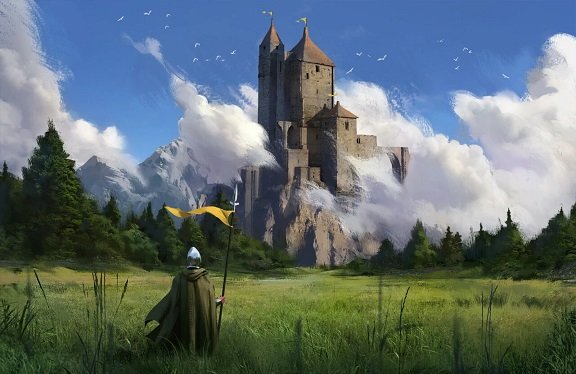Introduction
Welcome to the dynamic world of 3D design, where imagination knows no bounds. As a beginner venturing into the realm of creating captivating 3D environments, you’re about to embark on an exciting journey filled with endless possibilities. From the intricacies of 3D environment design services to the art of stylized 3D character design and crafting survival game characters, this comprehensive guide is your compass through the immersive landscape of 3D creativity.
The Basics of 3D Environment Design Services
In the ever-evolving field of 3D design, harnessing the power of specialized services is akin to having a skilled guide in uncharted territory. Here’s a detailed breakdown of the key aspects:
1. Understanding 3D Design Services
Before diving into the intricacies of 3D environment design, it’s crucial to grasp the concept of 3D design services. These services encompass a wide range of offerings, including modeling, rendering, and animation, each playing a pivotal role in bringing your envisioned environment to life.
Understanding the nuances of each service empowers you to make informed decisions, aligning your creative vision with the capabilities of these tools.
2. Choosing the Right 3D Design Tools
Selecting the appropriate tools is like choosing the right brush for a painting. Blender, Maya, and Cinema 4D are among the leading software options, each offering a unique set of features tailored to different needs. Invest time in learning the basics of your chosen tool to unleash your creative potential fully.
Exploring the functionalities of these tools, experimenting with basic shapes, and understanding the interface are essential initial steps. Familiarity with keyboard shortcuts and navigation within the software accelerates your workflow, allowing for a more seamless creative process.
3. The Art of Character Creation
In the realm of 3D environments, characters serve as the beating heart. Mastering stylized 3D character design involves understanding anatomy, proportions, and incorporating elements that resonate with your envisioned world. This step is where your creativity takes center stage.
Delve into tutorials and courses focused on character design, covering topics such as skeletal structure, facial expressions, and clothing design. These resources provide valuable insights into the nuances of character creation, offering practical tips for enhancing visual appeal.
4. Blending Realism and Style
Striking the perfect balance between realism and style is an art in itself. Whether you’re crafting characters for a fantasy world or a sci-fi adventure, the key is to infuse unique traits while ensuring they remain relatable to your audience.
Explore diverse art styles and reference materials to refine your understanding of stylization. Analyze successful character designs from various media, identifying elements that contribute to their visual impact. Experiment with different proportions, expressions, and accessories to develop your signature style.
Crafting Survival Game Characters: A Specialized Niche
5. Immersing Players in Your World
Survival games thrive on immersive experiences, and characters play a pivotal role in achieving this. From the rugged survivor to the menacing antagonist, each character should contribute to the narrative, making the player feel connected to the virtual environment.
Conceptualize characters with distinct personalities, backgrounds, and motivations. Consider how these elements influence their interactions within the game world. Creating a detailed character backstory enhances the richness of your virtual universe, providing players with a compelling narrative.
6. Designing for Functionality
Unlike static environments, survival games demand characters that are not only visually appealing but also functional. Consider factors like mobility, equipment, and how characters interact with the environment. The goal is to create a seamless and engaging gaming experience.
Investigate the technical requirements for character animations and interactions in the gaming engine you choose. Collaborate with 3D animators to ensure that your characters move realistically within the game environment. Prioritize functionality without compromising on the visual allure of your creations.
How to Make a 3D Environment: Practical Tips
7. Conceptualizing Your World
Before delving into the technicalities of 3D environment design, start with a clear concept. Sketch out your ideas, create mood boards, and define the visual elements that will define your world. This conceptual phase lays the foundation for a coherent and visually striking environment.
Engage in brainstorming sessions to articulate the core theme and atmosphere of your 3D environment. Consider factors such as the time of day, weather conditions, and the overall mood you aim to convey. Refine your initial sketches based on feedback from peers or mentors, ensuring a well-defined vision for your project.
8. Mastering Lighting and Textures
The magic of a captivating 3D environment lies in the details. Pay meticulous attention to lighting and textures. Experiment with different lighting scenarios to evoke the desired mood, and use high-quality textures to add depth and realism to your creations.
Explore the principles of lighting in 3D environments, understanding how different light sources influence the overall ambiance. Utilize rendering techniques to achieve realistic shadows and highlights, enhancing the visual appeal of your scenes. Experiment with various textures to create surfaces that are both visually compelling and true to the theme of your environment.
Conclusion
Congratulations! You’ve now navigated the basics of creating captivating 3D environments, from understanding the nuances of 3D design services to mastering the art of stylized character design and crafting immersive game environments. As you embark on your creative journey, remember that practice, exploration, and a dash of daring creativity are your greatest allies.
In the dynamic realm of 3D design, the only limits are those of your imagination. So, armed with newfound knowledge, plunge into the virtual canvas, and let your creativity sculpt worlds that captivate and inspire. Happy designing!
